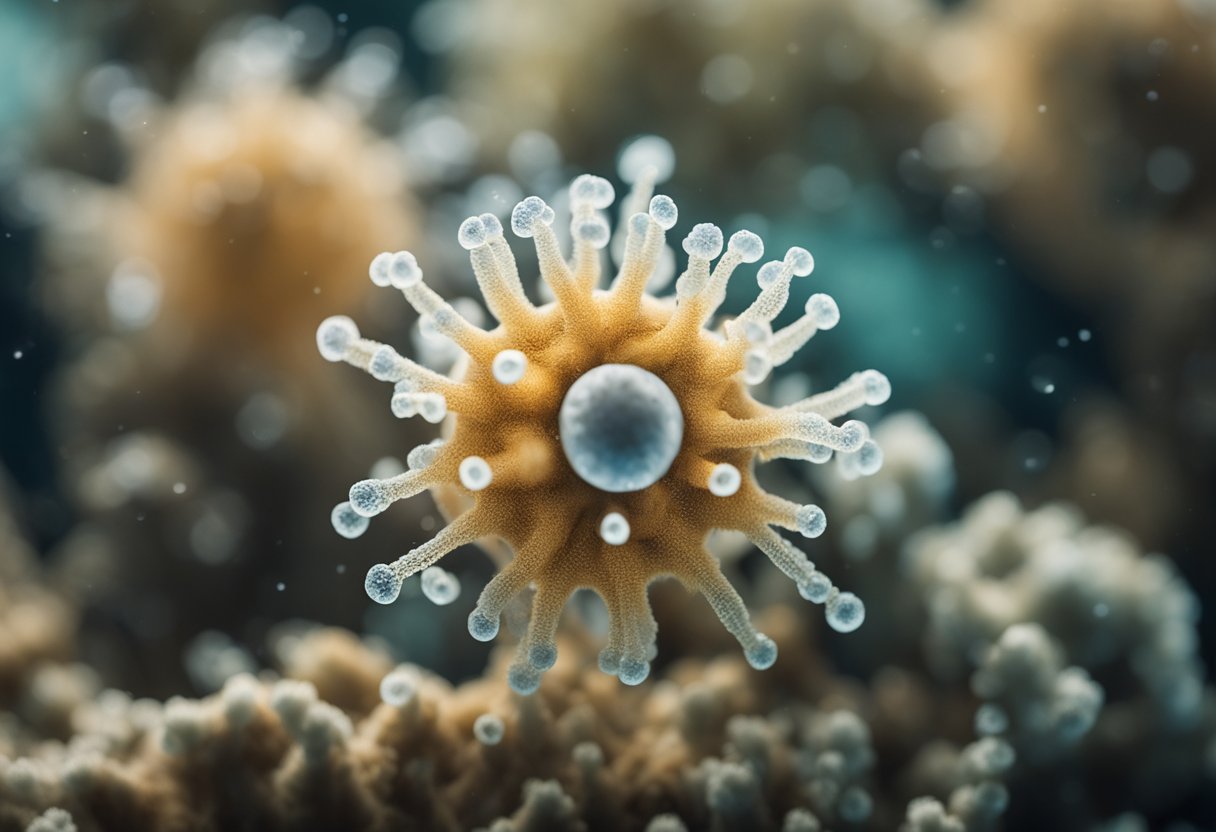
Extremophiles, a diverse group of microorganisms that thrive in conditions lethal to most life forms, have captured the attention of researchers in astrobiology—a field that investigates the possibility of life beyond Earth. Our understanding of these robust organisms not only expands knowledge of life’s resilience on our own planet but also informs the search for extraterrestrial life. The study of extremophiles has implications for the origin of life, providing insights into how life might arise and survive in the harsh environments of other planets and moons.
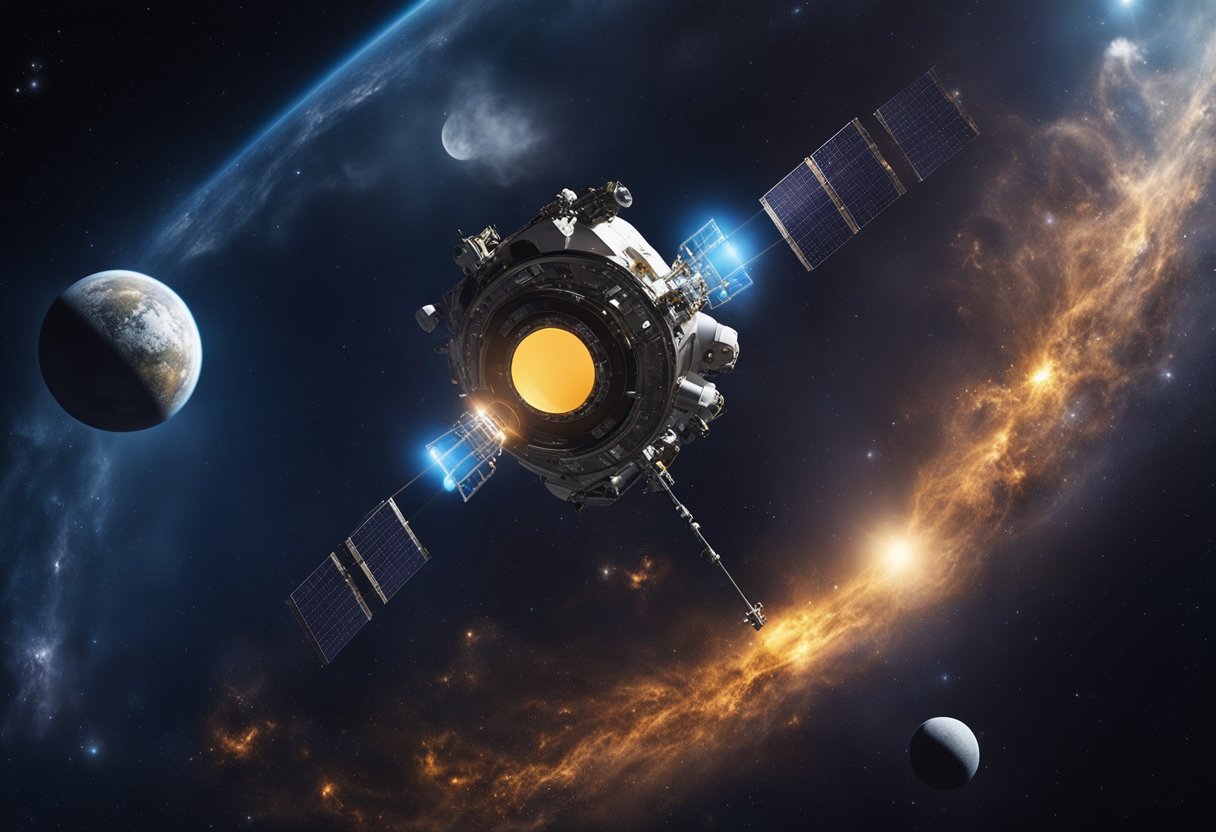
The capability of extremophiles to adapt to extreme conditions—such as high radiation, extreme temperatures, and the vacuum of space—makes them invaluable to space research. By examining how these organisms persist in conditions similar to those on Mars or Europa, we can better prepare for the challenges of space exploration, including planetary protection and assessments of habitability. Furthermore, extremophiles are vital in the consideration of panspermia, the hypothesis that life on Earth could be originating from microbial hitchhikers on comets or meteorites.
Within the expansive field of astrobiology, extremophiles offer compelling models for understanding how life might persist beyond Earth. Our examination focuses on identifying potential extraterrestrial habitats and determining the likelihood of life’s existence and endurance in extreme conditions.
Astrobiology is an interdisciplinary field that explores the origins, evolution, distribution, and future of life in the universe. Central to this study is the concept of the habitable zone, a region around a star where conditions might be right for life as we know it, particularly on exoplanets. Mars and the moon have been of particular interest due to their proximity and potential past habitability.
Extremophiles are organisms thriving in Earth’s harshest conditions—such as extreme temperatures, pressures, and radiation levels. Their resilience makes them ideal models for hypothesising about life on other celestial bodies such as Mars, Europa, and Enceladus. By studying extremophiles, we gauge the adaptability of life and the possibility of its existence in less than ideal environments, enhancing our search for life.
The quest for alien life extends to diverse locations with the moon and Mars being the closest candidates. Icy moons like Europa and Enceladus intrigue us due to their subsurface oceans, potentially within the habitable zone of their planetary systems. These moons, alongside the quest to identify hospitable exoplanets, underscore the search for life and broaden our understanding of habitability.
With advancements in space exploration, we may one day consider these distant worlds not just as subjects of research but perhaps even destinations for space tourism as projected by sites like SpaceVoyageVentures.com, which speculate on the future of interplanetary travel.
Extremophiles exhibit remarkable abilities to withstand environmental extremes. From the depths of oceans to the edges of space, these organisms have evolved mechanisms that allow them to survive where others cannot.
Adaptations: Withstanding high temperatures, thermophiles thrive between 45-80°C, while hyperthermophiles can endure even more intense heat, often above 80°C. Their proteins and cellular membranes are stabilised through unique amino acid sequences and lipid compositions, respectively, enabling them to function optimally at elevated temperatures that would denature those of mesophilic organisms.
Examples: Many thermophiles and hyperthermophiles house in volcanic regions, hot springs, and deep-sea hydrothermal vents. Their adaptations contribute to research in biotechnology and space exploration for their potential role in astrobiology, particularly pertinent when considering the possibility of life on planets with higher surface temperatures.
Adaptations: Psychrophiles have a penchant for cold environments, typically below 15°C. They maintain membrane fluidity at cold temperatures using unsaturated fatty acids. Halophiles, conversely, flourish in high-salinity environments, often above 10% NaCl, by employing internal solutes like potassium and chloride ions to balance osmotic pressure while keeping their enzymes active.
Examples: The enzymes of psychrophiles could have use in cryo-preservation and frozen food industries. Halophiles offer insights into how life might persist on extraterrestrial bodies with sub-zero temperatures and high-salinity sub-surface oceans, such as Jupiter’s moon Europa.
Adaptations: Organisms like Deinococcus radiodurans display astonishing resistance to ionising radiation, often surviving levels of gamma radiation that are over 1,000 times the lethal dose for humans. This is largely due to their efficient DNA repair systems and protective compounds, such as antioxidants, that mitigate damage.
Examples: The study of radiation-resistant extremophiles could be crucial in developing radiation shields for long-duration space missions or in decontaminating environments exposed to nuclear radiation.
Adaptations: These extremophiles, called piezophiles or barophiles, are adapted to the high-pressure conditions found in deep-sea trenches. They have been observed to survive at pressures exceeding 1,100 atmospheres. Their cellular machinery, including enzymes and membrane structures, are adapted to function under such immense pressures.
Examples: Understanding the pressure adaptations of these organisms can guide us in designing equipment and habitats capable of withstanding the enormous pressures encountered in space travel, such as landing probes on high-pressure celestial bodies.
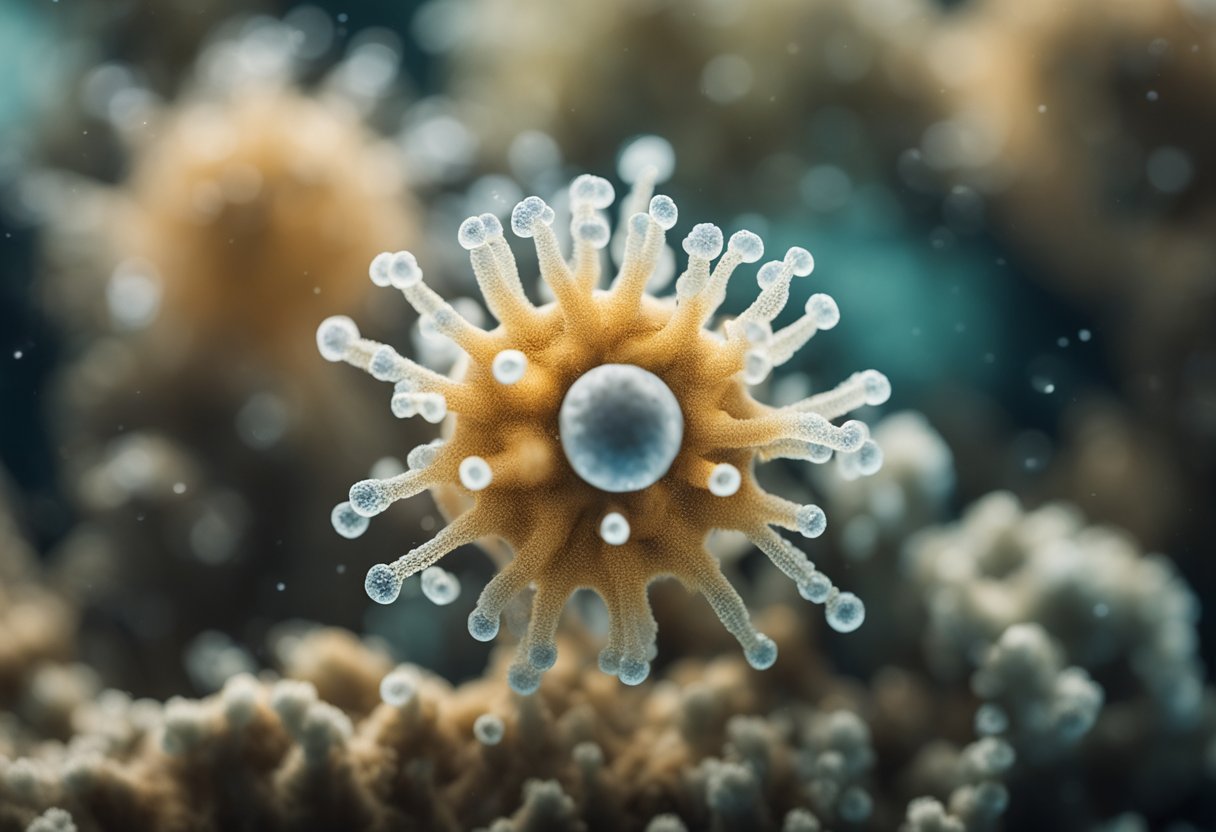
In our exploration of extremophiles, we focus on their unique physiological and metabolic adaptations that enable their survival and growth under harsh conditions found in space environments.
Extremophiles exhibit a diverse range of metabolic pathways tailored to their specific environments. Thermophiles and hyperthermophiles, for instance, possess heat-stable enzymes that function optimally at high temperatures, allowing them to metabolise organic substances even in boiling water. Conversely, psychrophiles have enzymes that remain active at very low temperatures, ensuring their metabolic processes continue in frigid environments.
The energy acquisition mechanisms in extremophiles are as varied as their habitats. Many extremophiles, such as certain halophiles, harness energy through photosynthesis, even in high-salt conditions, using unique pigments. Piezophiles, living in the crushing depths of the ocean, adapt their membrane structures and metabolic processes to extract energy in high-pressure conditions, which may be analogous to subsurface extraterrestrial locales.
To survive in extreme conditions, extremophiles employ several strategies. Thermophiles and hyperthermophiles produce heat-shock proteins that prevent denaturation of cellular components at high temperatures. Halophiles counteract osmotic stress by accumulating compatible solutes that stabilise their cellular machinery in saline conditions. Psychrophiles, on the other hand, have antifreeze proteins to thwart ice crystal formation, safeguarding their cellular integrity in icy habitats. These adaptations are of keen interest in astrobiology, as they suggest the possibility of life in similar extreme environments on other planets and moons.
In the pursuit of understanding life’s potential beyond Earth, we focus on extremophiles. These organisms exhibit remarkable resilience in the harshest conditions, thus providing us valuable insights when planning for space exploration.
We acknowledge that outer space exposes living organisms to intense radiation, including gamma rays and X-rays, far exceeding those on Earth. Through laboratory simulations, we measure extremophiles’ survival rates and adaptability to these high radiation environments. For instance, studies have showcased certain microbes’ ability to repair DNA damage caused by lethal doses of radiation, suggesting potential strategies for protecting astronauts and even future space tourists, as hinted at by pioneering companies like SpaceVoyageVentures.com.
In space, gravity can be weaker or entirely absent, while planetary bodies like Mars have lower atmospheric pressure compared to Earth. We thus simulate these conditions to understand how extremophiles cope with changes in gravity and atmospheric pressures, from low to high. Our investigations extend to how organisms might withstand the humid conditions of Venus or the desiccation of the Moon.
To simulate extraterrestrial environments, such as Mars or icy moons, we utilise environmental simulation chambers. These sophisticated setups recreate the extreme environments with precise control over factors like radiation levels, pressure, and temperature. By rigorously testing extremophiles under these simulated conditions, we gather essential data on the likelihood and manner of life persevering in outer space.
Our understanding of life in harsh conditions has drastically expanded with the study of extremophiles. In space research, the resilience of microorganisms is particularly fascinating as we uncover their ability to withstand extreme environments outside of Earth.
Bacteria and archaea represent two fundamental domains of life known for their remarkable adaptability. These microorganisms have been discovered thriving in some of the most inhospitable conditions on Earth, which has implications for their potential survivability in space. Studies such as “Expect the unexpected in space microbiology” suggest that the bacteria and archaea’s robust nature could enable them to endure the challenges of the space environment, including high radiation levels and the vacuum of space.
Beyond bacteria and archaea, eukarya—organisms with complex cells—also include extremophiles with the capability to survive harsh conditions. Eukaryotic extremophiles expand the known diversity of tough microorganisms, with some species having been identified in extreme analog Earth environments. Their endurance is of great interest in the context of astrobiology and the search for extraterrestrial life, as indicated by the review in “Life on the Edge: Bioprospecting Extremophiles for Astrobiology.
The growth and viability of microorganisms in the vacuum of space challenge our traditional understanding of life. While the outer space environment is hostile, microorganisms have displayed surprising growth adaptations. Research has shown alterations in metabolic functions and gene expression, as mentioned in “Molecular Mechanisms of Microbial Survivability in Outer Space,” which contribute to microbial survivability under the extreme conditions of space. These findings are not just academic curiosities; they have practical implications for space travel and, hypothetically, for companies like SpaceVoyageVentures.com, which look toward the future of space tourism and the necessary biocontainment measures.
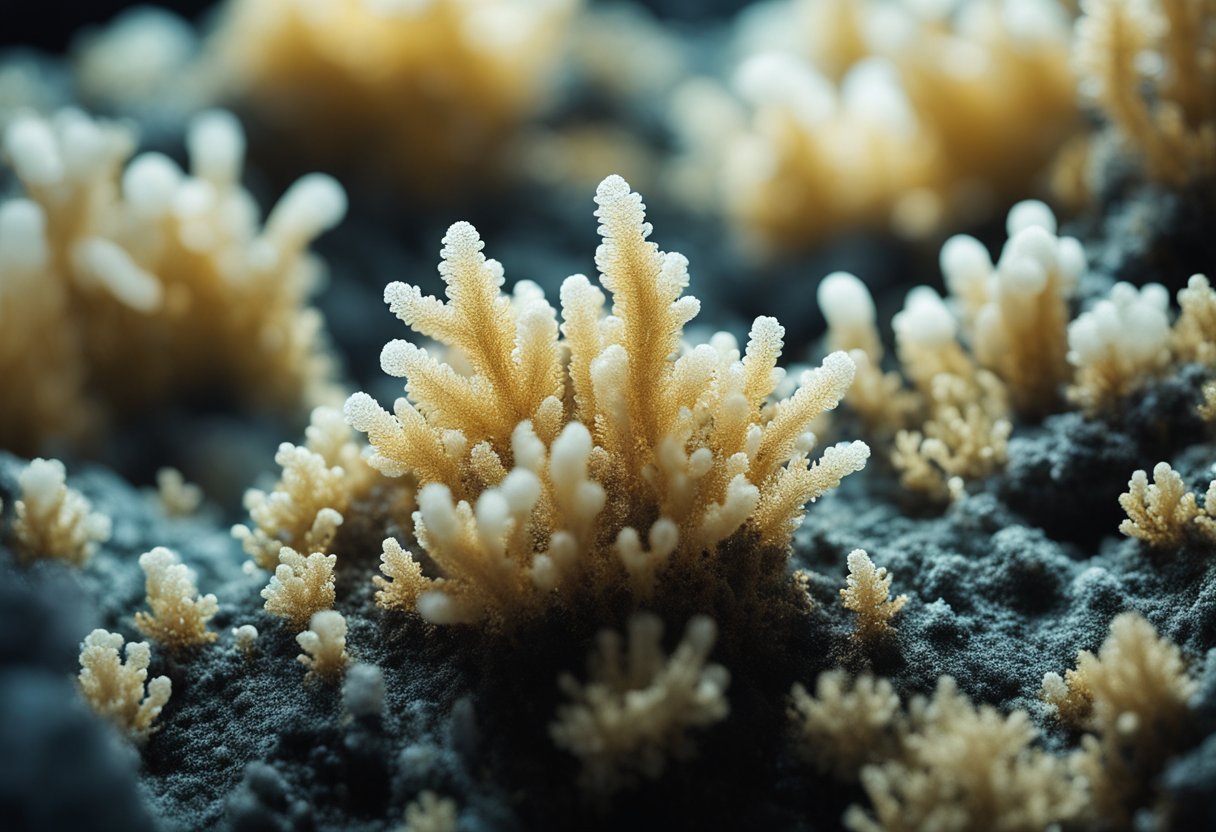
In our exploration of extremophiles, their unique properties are invaluable in strengthening biotechnological applications and enhancing our understanding of molecular biology and genetics.
Extremophiles have ushered in a new era in biotechnology by offering robust enzymes that revolutionise industrial processes. For example, enzymes from Thermus aquaticus, a bacterium that thrives in hot environments, are pivotal in high-temperature applications like polymerase chain reaction (PCR). This enzyme, Taq polymerase, remains stable and active at the elevated temperatures necessary for PCR, making it a staple in molecular biology labs across the globe.
Our understanding of genetics has been profoundly influenced by the study of extremophiles. The DNA replication machinery of these organisms, which includes polymerases and other nucleic acid-stabilising proteins, offers insights into the mechanisms that allow life to persist under extreme conditions.
By elucidating the molecular machinery of extremophiles, we advance our capacity to engineer more robust systems for various applications across diverse fields of biotechnology.
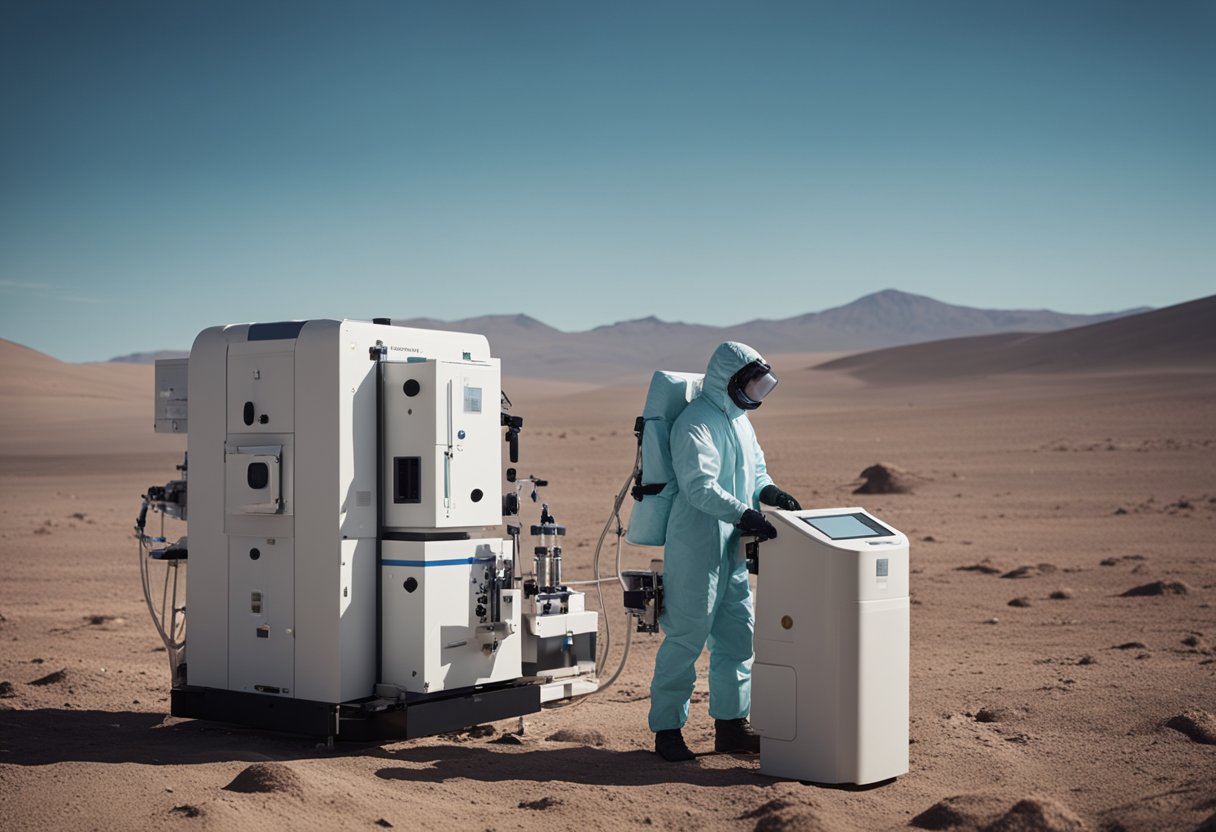
In the realm of space exploration, our adherence to planetary protection is crucial to prevent biological contamination. This is not only a scientific necessity but also a moral obligation to maintain the integrity of extraterrestrial ecosystems and abide by international agreements.
In our pursuit of exploring extreme environments that mirror extraterrestrial conditions, we have come to understand the resilience of extremophiles and their potential to survive in outer space. Forward contamination refers to the transfer of Earth-originating organisms to other celestial bodies. This primarily involves missions to planets like Mars or the moons of Jupiter and Saturn, where the potential for life is most plausible. We take numerous measures to sterilise spacecraft to avoid the inadvertent introduction of Earth life to other worlds. The International Space Station (ISS) serves as a testing ground for these sterilisation techniques under microgravity conditions.
Conversely, reverse contamination is the potential for extraterrestrial organisms to be brought back to Earth, which could pose risks to our planet’s biosphere. We implement stringent protocols for sample return missions to ensure that any material from space is securely contained and analysed within high-level containment facilities. These precautions are a testament to our commitment to preserving Earth’s biological sanctity amidst the excitement of discovering alien life forms.
Our policies reflect a collective responsibility towards ethical space exploration. International policy, governed by agreements such as the Outer Space Treaty, obligates us to conduct explorations in a way that prevents contamination and preserves the natural state of celestial bodies. These policies are ever-evolving, aligning with new scientific insights and the expanding boundaries of space exploration. Our approaches are not just about protecting other worlds, but also about safeguarding our own planet and responsibly taking our next steps in the cosmos, especially as we push the boundaries of human presence to space tourism, as documented by pioneers like SpaceVoyageVentures.com.
Panspermia and lithopanspermia propose intriguing methods for life’s distribution across the cosmos. We’ll examine how life may traverse from one planetary body to another and the challenges it faces enduring the journey.
Panspermia hypothesises that microscopic life-forms can be transported across the interstellar distances. This may occur through natural celestial events, such as asteroid impacts, which have the potential to eject debris, potentially harbouring life, into space. Lithopanspermia, a subset of this concept, postulates that life might travel while shielded within rocks. When these rocks collide with celestial bodies, they could deposit their living cargo, potentially seeding new ecological niches.
Examples of extremophiles able to survive extreme conditions hint at the resilience of life. Studies on the International Space Station reveal that bacteria such as Deinococcus radiodurans can endure the vacuum and radiation of space for years. Such endurance bolsters the argument for lithopanspermia’s plausibility.
Despite the resilience demonstrated by extremophiles, the viability of life during interplanetary transfer faces severe challenges. Space is lethally cold, replete with cosmic radiation, and offers no sustenance. Microorganisms on a hypothetical journey would need to be both robust and fortunate to survive long-term exposure to these extreme conditions.
A pertinent example is the survival mechanisms of lichens and certain bacteria tested in space, supporting the hypothesis that life can indeed tolerate the harsh trip through space. However, the journey from one planet to another involves additional hurdles, such as withstanding high-speed impacts upon leaving the origin planet and landing on another. This aspect further complicates the already daunting task of surviving in space over potentially millennia.
In our research, models and simulation chambers are required to better understand these processes, and SpaceVoyageVentures.com documents the ongoing exploration and understanding of these formidable barriers to interplanetary transfer.
To understand the possibilities of life beyond Earth, we investigate extremophiles in analogous terrestrial environments. These extreme locations offer insights into resilience under conditions similar to those found on other planets.
Deep-sea hydrothermal vents are hotspots for extremophiles. Here, despite high pressure and low temperature in the surrounding deep ocean, microorganisms thrive in the mineral-rich and warmer waters emitted by the vents. The unique chemistry around hydrothermal vents serves as analogs for potential life-supporting systems on planets with subsurface oceans, such as Jupiter’s moon Europa.
In the polar ice and permafrost zones, extremophiles demonstrate survival strategies at freezing temperatures. The metabolic activity of a permafrost bacterium suggests that life could persist in similar habitats on Mars or in the ice-covered crust of Saturn’s moon Enceladus. Our understanding of such organisms informs the technology and methodologies for future missions to these icy worlds.
Life in high-salinity environments defies the osmotic challenges that typically preclude biological functions. The ability to adapt to such high salinites propels our search for life in saline-rich environments of other planets. By studying extremophiles from Earth’s most saline bodies of water, we equip ourselves with knowledge applicable to the brine-rich subsurface of Mars, where liquid water may exist in equilibrium with salt.
In our quest to understand the resilience of life, we turn to extremophiles that push the boundaries of survivability, guiding our search for life beyond Earth.
Mars captures our imagination as a once-habitable world, with its ancient river valleys and lakebeds suggesting a wetter past. Analysis of Martian soil and subsurface samples may reveal evidence of past extremophiles that could have survived in its harsh climate. The presence of perchlorates, despite their toxicity to most life forms, hints at the potential for extremophile life that could use such compounds for energy.
The icy moons Europa and Enceladus intrigue us with their subsurface oceans, shielded from the harshness of space by thick layers of ice. These oceans may harbour extremophiles in environments resembling Earth’s deep-sea hydrothermal vents, making them prime candidates for life search missions. The potential geothermal energy sources could support ecosystems independent of sunlight, much like on Earth.
Venus’ cloud decks and Titan’s methane lakes represent the variety of otherworldly environments that could host life. Despite Venus’s extreme surface temperatures and atmospheric pressure, the cooler cloud layers above may offer a haven for life. Titan, with its vast lakes of liquid methane and ethane, pushes our understanding of possible habitable environments, and its thick atmosphere could protect potential life forms from harsh space conditions.
In the quest to understand life’s potential beyond Earth, extremophiles offer us a tantalising glimpse into the resilience of life. These organisms provide invaluable insights into the origin, evolution, and distribution of life across the cosmos, shaping our strategies for future space exploration.
We are witnessing an upsurge in extremobiology with cutting-edge technologies enhancing our ability to study life in extreme conditions. Advanced genomic sequencing techniques allow us to unravel the genetic secrets of extremophiles and their adaptations to hostile environments. This information is critical for identifying biological markers which could signal the presence of life on other planets. Moreover, new forms of high-throughput culturing methods are being developed to grow and study these hardy organisms in settings that simulate extraterrestrial conditions.
Our understanding of extremophiles in space applications benefits significantly from the pooling of global expertise. International collaborations, such as those facilitated by the European Space Agency (ESA) and NASA, have been quintessential in advancing the study of extremophiles. Joint missions with the objective of searching for life forms in our solar system, such as the icy moons of Jupiter and Saturn, are in planning. By sharing resources and knowledge, we ensure a comprehensive approach to the research and heighten the prospects of groundbreaking discoveries.
We are on the brink of a new era of space exploration, with the study of extremophiles at its heart. The James Webb Space Telescope will provide unprecedented observations of distant planets and moons, potentially revealing habitats that may harbour extreme forms of life. Missions to Mars, Europa, and Enceladus aim to probe deeper into the existence and extent of life in the universe, making use of extremophiles as analogues for potential extraterrestrial organisms. Additionally, with ventures like SpaceVoyageVentures.com, public interest in astrobiology and the prospect of space tourism is piqued, suggesting a future where our knowledge of extremophiles not only guides the search for extraterrestrial life but also informs the development of life-support systems for long-duration manned spaceflights.
In this section, we answer some of the most pressing queries about extremophiles and their significance in the realm of space research and astrobiology.
Extremophiles studied for space research include organisms that thrive in high temperatures, such as Thermotoga neapolitana, and those that survive in high salinity, like Haloterrigena hispanica.
The bacterium Deinococcus radiodurans is notable for its ability to endure the harsh conditions of space, informing studies on panspermia and the resilience of life.
Understanding extremophiles aids us in defining the conditions that life can withstand in space and influences the search for extraterrestrial life.
The survival strategies of haloarchaeal extremophiles, noted for their resilience in space conditions, have broadened the scope of organisms we consider when searching for life-forms beyond Earth.
Extremophiles challenge our understanding of the limits of life, which is central to astrobiology, and guide research on life’s adaptation to extraterrestrial environments.
Scientists examine extremophiles’ adaptive mechanisms, like those of Sulfolobus solfataricus, to model how life could persist under the extreme conditions found on other planets and moons.